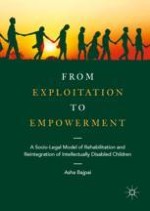2018 | OriginalPaper | Buchkapitel
4. Towards Empowerment: Changing World and Changing Mind-Set
verfasst von : Asha Bajpai
Erschienen in: From Exploitation to Empowerment
Verlag: Springer Singapore
Aktivieren Sie unsere intelligente Suche, um passende Fachinhalte oder Patente zu finden.
Wählen Sie Textabschnitte aus um mit Künstlicher Intelligenz passenden Patente zu finden. powered by
Markieren Sie Textabschnitte, um KI-gestützt weitere passende Inhalte zu finden. powered by
